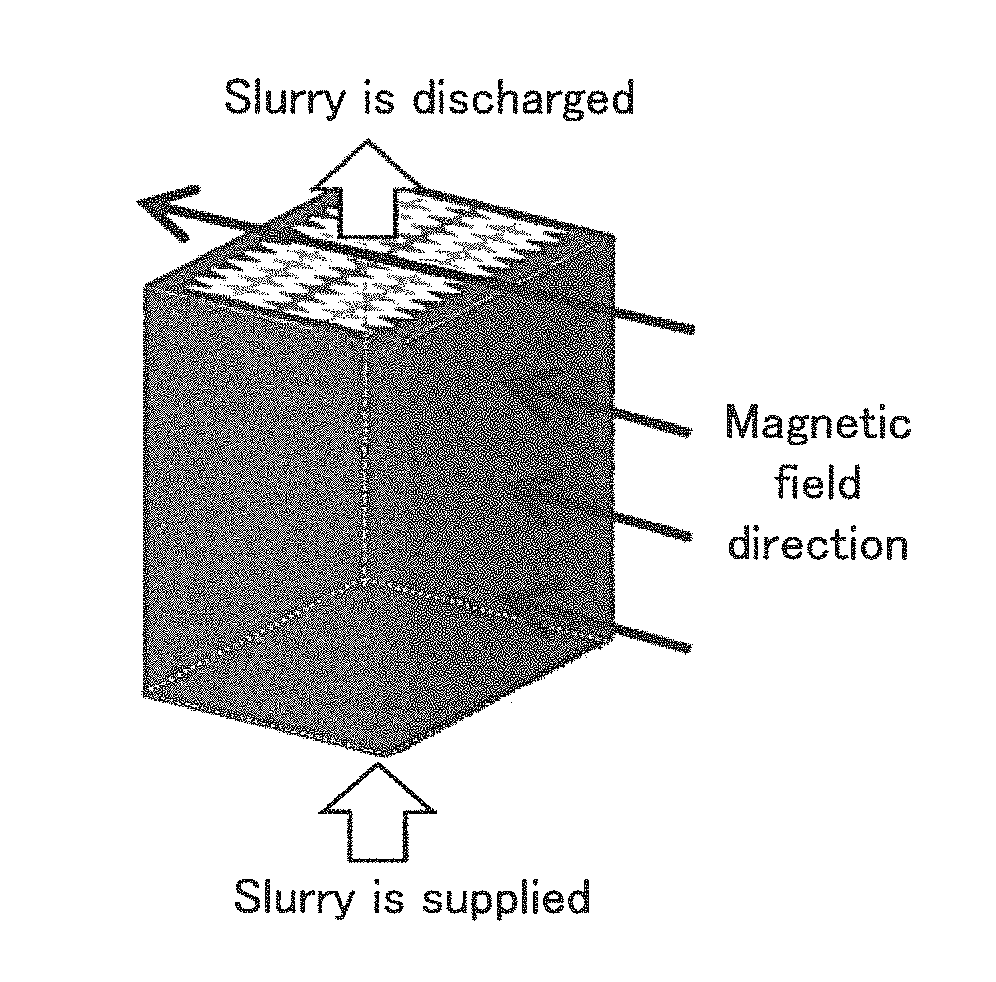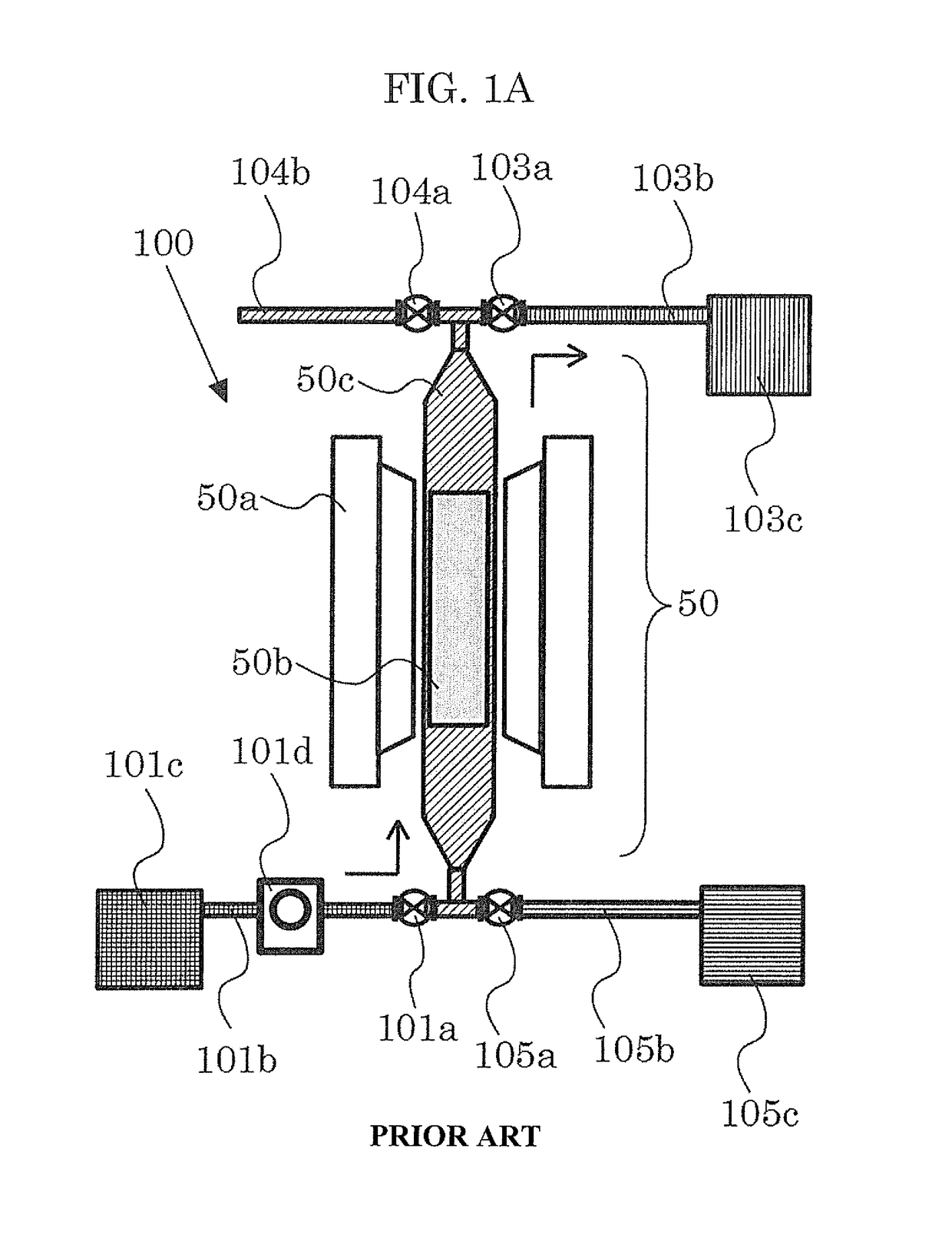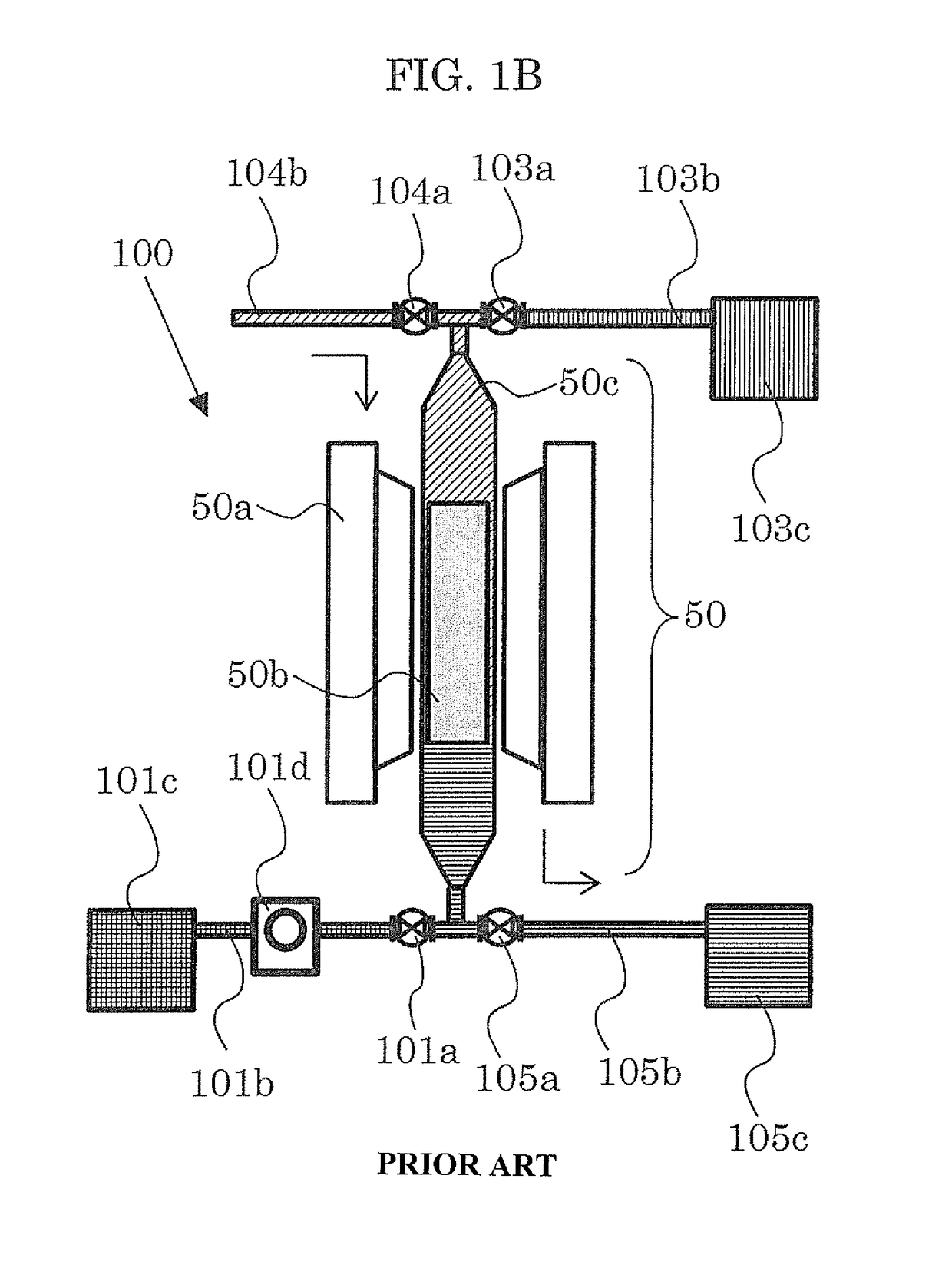Matrix for magnetic separator and magnetic separator
a magnetic separator and matrix technology, applied in the field of matrix and magnetic separator, can solve the problems of poor sorting accuracy, large amount of non-magnetic particles entanglement, poor sorting accuracy, etc., and achieve the effect of enabling previous recognition, high accuracy and high efficiency
- Summary
- Abstract
- Description
- Claims
- Application Information
AI Technical Summary
Benefits of technology
Problems solved by technology
Method used
Image
Examples
examples
Simulation of Magnetic Force Distribution
[0080]A magnetic force distribution in a matrix in a case where the matrix for a magnetic separator of the present invention is employed as a matrix for a magnetic separator used in a magnetic separator was simulated with analyzing software (FEMM 4.2, free software created by David Meeker).
[0081]FIG. 3 illustrates the configuration of the matrix (wavelike matrix) for a magnetic separator for which the simulation was conducted, and a result of a finite element method-based simulation of a magnetic force (BΔB) distribution for the wavelike matrix (a magnetic force distribution in the matrix space) under a condition that a density of a magnetic flux generated by an electromagnet formed of an air core coil (hereinafter, referred to as air core magnetic flux density) was 1 T.
[0082]As illustrated in FIG. 3, a wavelike matrix 10 includes a plurality of entirely approximately wavelike plate-shaped magnetic walls 11 in each of which wave-shaped bent s...
example
[0122]A magnetic separator according to Example was produced by employing the wavelike matrix 10 (see FIG. 3) having a wave height h of 300 μm and an inter-vertex pitch p of 4 mm as a matrix 50b for a magnetic separator in the magnetic separator 100 illustrated in FIG. 1A. A sorting test was performed with this magnetic separator in the manner described below.
[0123]The sorting target slurry used was a slurry having a solid concentration of 10% that was obtained by mixing two kinds of solid particles presented in Table 2 below (a sample A with a high magnetic susceptibility; a green phosphor LAP and a sample B with a low magnetic susceptibility; a red phosphor YOX) in pure water in which a dispersant NOPCOSANT RFA available from San Nopco Ltd. (0.15% by mass) and a dispersant SN WET 980 available from San Nopco Ltd. (0.015% by mass) were added. In a state that the electromagnet was excited, the sorting target slurry was introduced into the magnetic separation flow path through the so...
PUM
 Login to View More
Login to View More Abstract
Description
Claims
Application Information
 Login to View More
Login to View More - R&D
- Intellectual Property
- Life Sciences
- Materials
- Tech Scout
- Unparalleled Data Quality
- Higher Quality Content
- 60% Fewer Hallucinations
Browse by: Latest US Patents, China's latest patents, Technical Efficacy Thesaurus, Application Domain, Technology Topic, Popular Technical Reports.
© 2025 PatSnap. All rights reserved.Legal|Privacy policy|Modern Slavery Act Transparency Statement|Sitemap|About US| Contact US: help@patsnap.com



